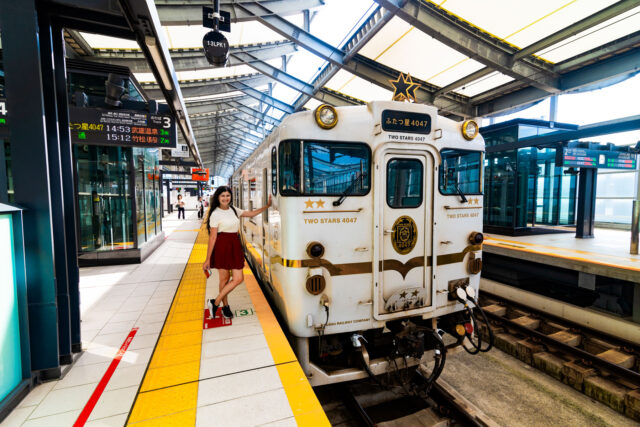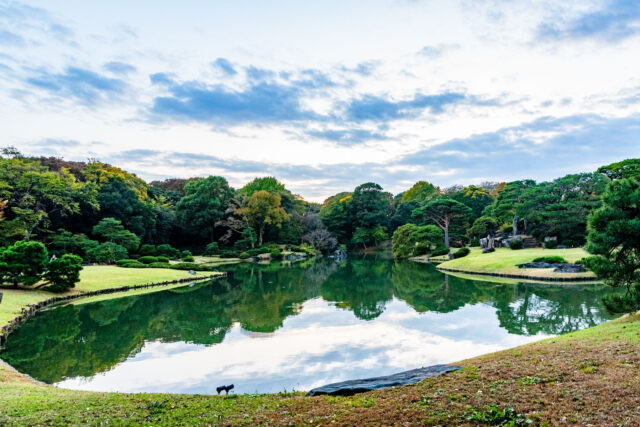Quick heads‑up, fellow travelers: Hit the Road Ket contains some affiliate links. Book through them and I earn a small commission at no extra cost to you – fueling my caffeine fix and future travels! For more details, see my Disclosures.
If you’ve heard people rave about Japan’s trains, believe the hype. The system works like a clockwork – unbelievably punctual and efficient. You’ve got everything from high-speed Shinkansen to regional trains to super cute sightseeing trains to metro lines. We’ve taken dozens of trains in Japan (I think it’s even in the hundreds, I lost count), but only remember one case, when a train was late – shocking I know 😊
In this complete guide, I’ve put together everything you need to know to ride Japan’s trains without a hassle – here’s your tips from taking Shinkansen to buying tickets and avoiding faux pas.
Types of Trains in Japan
Local and Regional Trains
Japan has hundreds of different train lines passing through major cities and remote rural areas, mountainous terrain and the seaside. While JR covers 70% of the whole train network, there are a number of private railways as well, like Kintetsu, Tobu or Hankyu.
Local, Rapid and Express trains are great for travelling on smaller distances inside cities or among the closer cities. These trains have few differences, mainly the number of stops they make. Rapid simply makes fewer stops than local, while express – fewer than rapid. They also usually provide more standing space, than in case of Limited Express and Shinkansen trains. These trains can be taken using basic fare tickets – or simply touching your Suica or a bank card.
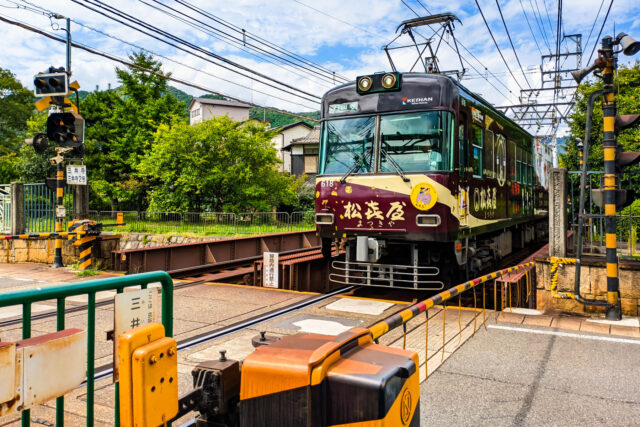
Limited Express Trains
Limited Express trains stop only at the major train stations. You will need to pay a limited express surcharge to the basic fare. Some of them even require seat reservations.
Shinkansen: The Bullet Train Magic
When you think of trains in Japan, I am pretty sure you are thinking of Shinkansen. Those beautiful sleek and elegant fast trains gliding through the whole country. Did I already say I love them? Well, I do. They are the best transportation there is and definitely rival any fast trains whether in China, Germany, France or South Korea.
While Japan has excellent bus network and a number of flight, and the Shinkansen is the most expensive option on many major routes, I personally still prefer to pay some more and take these trains. They not only save you a lot of time, but also let you be far less tired. Maybe you would disagree, but I get much less tired on these trains than spending same amount of time on planes or buses.
Shinkansen trains offer Ordinary class and Green (business) class. Some newer trains even have Gran (first) class.
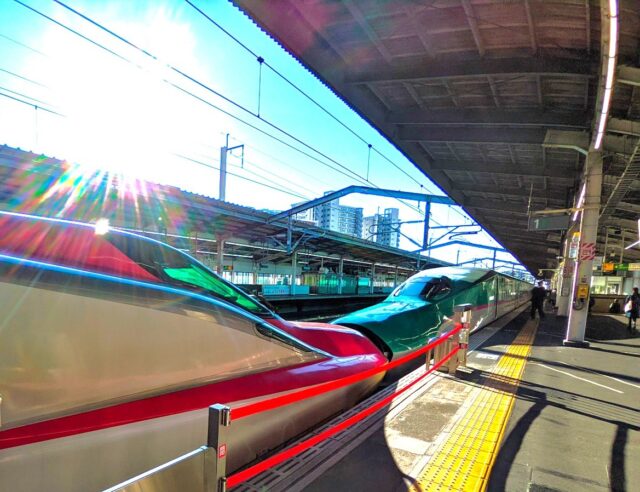
Joyful Trains – Cutest Way to Travel
Japan is known for making everything kawaii. Not surprisiring that there are a number of cute train lines – called joyful trains. I simply love them. So I dedicated several articles to these wonderful trains.
Guide to joyful trains around Japan
Tips for Travelling by Train in Japan
Reserved or Non-reserved Seats?
Local, Rapid and Express trains have fully unreserved seats.
On Shinkansen or Limited Express trains you can book reserved or non-reserved seats. Get reservations at least during busy seasons, like Sakura in April or Momiji in November. During other seasons you will most probably be fine taking non-reserved cars. Many people may skip reservation, given that it requires additional fees.
That said, if you want to travel at specific times for sure, or aren’t prepared to stand, in case something happening, reservations would give you a peace of mind. I personally would not book outside the busiest periods, however, I definitely would if traveling with parents to make sure that I make the trip as comfortable for them, as possible. On the other hand, if traveling solo, or with hubby, we can stand for some time, if things go wrong.
Queuing at the Platforms
Whether it’s Shinkansen or a local train, people wait at the doors in queues. These queues are unbelievably orderly. For the local slower trains, you can wait at any door, as they are all non-reserved, for Shinkansen or other reserved trains, like Kuroshio, you will have to wait at the Car you are assigned to. The platforms have numbers, so you can see where to wait.
Eating on Trains
Japanese don’t eat in trains or buses inside the cities or on shorter distances. If you are taking local slower trains, eating is frowned upon. However, you can eat on Shinkansens, Limited Express trains and most Joyful trains. You even have the trays in front of your seats on these trains and sometimes even the buffet car or a food cart (although this last is becoming more and more rare).
For Shinkansens and other longer rides, you will find Bento boxes (lunch boxes) at the train stations. There’s a huge variety of these boxes ranging from small breakfast box to self-heating dinner box. For those, who like kawai items, they have different themed bento boxes, like Hello kitty. I actually did buy it once, honestly just to keep the box 😛
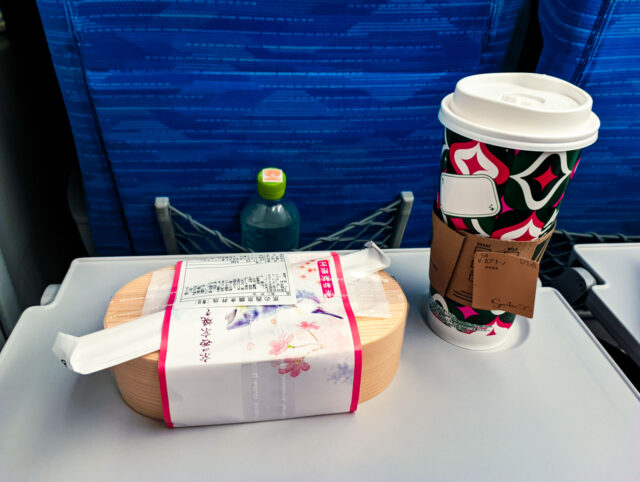
WiFi Availability
Many Shinkansen lines have WiFi available, however, don’t rely on this. When it comes to other trains, whether limited express or slow trains, it’s far more rare.
Forward Facing Seats
On most major train lines the seats are always forward facing, because they turn. So you never have the problem of having to select forward facing seats, while booking a ticket. The only exceptions would be some slow and sightseeing trains, which are older and do have some backward facing seats. But with those trains, you will not feel any discomfort, they are mainly for enjoyment and you won’t be seating in your seat more of the ride 😊
No Loud Speaking
This applies to literally any public transport. You have probably noticed that Japanese people hardly ever speak on public transport. Unless you find foreigners, normally you will have a very quiet ride, whether you are traveling on an intercity train, a bus or a metro train in cities. If you speak loudly, you will be considered rude. Japanese being Japanese, most probably no one will tell you anything. But obviously breaking this rule is not a nice gesture.
Luggage Issues during Train Travel
Luggage on Trains in Japan
Most Shinkansen trains have limited luggage space at the ends of cars. Don’t assume it’s for anyone, like in other countries. This space is reserved only for people, who have purchased the option of traveling with oversized luggage.
That said, unless you have a huge bag – all three dimensions being 160cm + – then you won’t have an issue with storing your luggage. We had one suitcase, which was the average sized checked bag weighing 20 kilos, and we easily stored it overhead – well, for me it’s not so easily, but you get the idea 😊
You can even put your luggage at your feet, if you are lazy to lift it to overhead storage space. I could easily store my cabin bag in front of my legs and have plenty of space still – the space is indeed generous. However, a very tall person and a bigger suitcase wouldn’t fit 😊
II don’t suggest to bring a bag which is oversized – 160cm+, but if you do, you need to reserve a special seat with extra storage. These seats are usually the last row of each car, behind which there’s sufficient storage area.
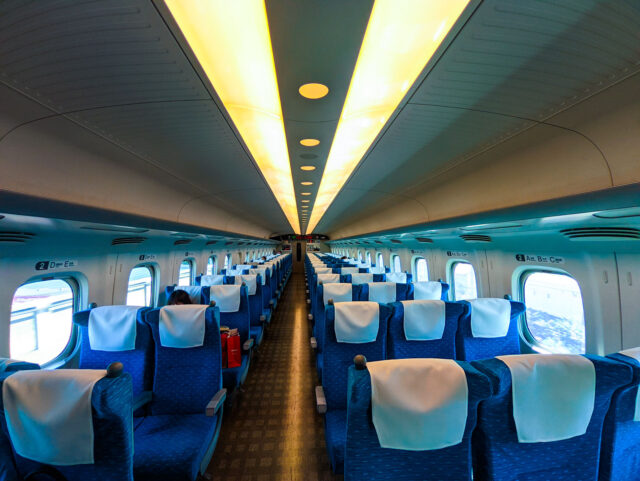
Luggage Storage at the Train Stations in Japan
Many stations have luggage lockers. They are quite easy to find usually. These lockers are limited though, especially the bigger sized ones. If there’s an event going on somewhere nearby or if it’s a very busy weekend, they may fill up quickly. We had that issue once in Hiroshima, when we needed to leave the luggage for the day, but apparently there were some sports game and a concert happening at the same time in the city. So all lockers were full and all storage locations (we were directed to 3 different ones), had huge queues.
There’s an app called Ecbo Cloak (nope, it has nothing to do with cloaks) – it lets you find nearby shops or cafés that store bags. That may come handy in a situation, like ours. Although truth be told, we didn’t try this. When we found ourselves among huge crowds in Hiroshima, we just hopped on a train and headed to spend the day in Onomichi – a cute seaside town – which was a great decision.
Luggage Forwarding in Japan
Many people, who don’t wish to drag luggage with them on the trains or are traveling with kids, decide to use luggage forwarding service. This service is a huge deal in Japan and many travelers use it.
Luggage forwarding means that a certain company will pick your luggage up from your hotel and deliver it to your next hotel. You can also arrange pick up from the airport or drop off to the airport. To arrange the service, ask your hotel or at the convenience stores. Most hotels have communication with the biggest companies, like Yamato and Sagawa and they will call for you and arrange the pick up. Normally you would send the luggage the day before checking out and get it on the day of check in to the next hotel. However, it can take more time. So you should be aware that if the luggage doesn’t arrive in time, you need to be prepared and have your essentials with you in your day bag.
We used package delivery service once. Our hotel didn’t have the option, so we went to the nearby convenience store – Lawson’s and asked there. They filled in a form and took our package. It was supposed to arrive by the evening of the next day, but in fact it took two days.
For us luggage forwarding was not a great option for several reasons – firstly we didn’t travel with very big bags, secondly I didn’t want to always remember to keep essentials out of the main luggage, but most importantly it was costly. Prices range from 1000 to 3000 depending on the distance and the size of the bag. As we moved hotels several times, according to my calculations total cost of using this service for our two bags on a 3-week trip would add up to 23,000 yen. That’s a cost of one Regional Rail Pass, so we really couldn’t justify this. That said it’s a convenient option for many travelers, especially those traveling with kids.
Payment Options
IC Cards (Suica/Icoca/Pasmo and more)
All IC cards can be used across the country – it doesn’t matter what its name is or where you purchased it. If you have an iPhone, you can even load Suica directly into Apple. But tough luck for Android users, unless your phone was bought in Japan (which seems pretty much impossible for tourists).
These cards work not only inside the cities but on most trains too, except for Shinkansen. Although if you register your card and link the bank card to it, then you can even use Shinkansen.
You can get a refund on unused balances, but there’s a small fee. We just kept ours as souvenirs.
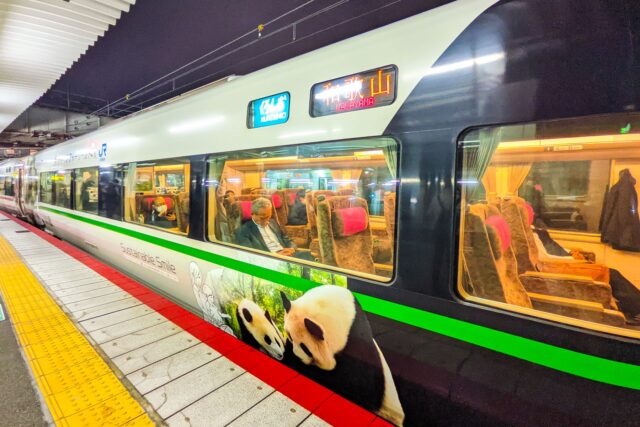
Credit/Debit Cards
Many of the train lines/stations started introducing the option for using bank cards, as the payment option. You can simply touch in and touch out your bank card at the indicated gate, like you would your Suica.
I have seen more availability of using Visa, rather than Mastercard. We had both, so whenever our Suicas were not charged, we could use our debit cards instead. However, this is not an option everywhere, so try to have your IC card charged.
Note: Mobile payments using your Google pay or Apple pay don’t work.
Train Tickets
On most slower trains you can easily use your IC Card and not bother with purchasing any special tickets. So, simply use either of these cards wherever possible. Technically, you can use them on Shinkansen and other faster/long distance trains too, but you need to have the card registered and have sufficient money on it. So, as a tourist, you will most probably be better off buying actual tickets.
Buying Shinkansen & Limited Express Train Tickets
You can buy your train tickets either online or in-person. While doing so in person just before taking train might be convenient, if there are no queues, more often than not, at the busiest train stations, you will find people waiting at the ticket offices, as well as at the ticket machines. The waiting can be even half an hour or more at some stations.
Note: All tickets purchased online, except on Smartex app, need to be picked up in person either at the machines or ticket offices.
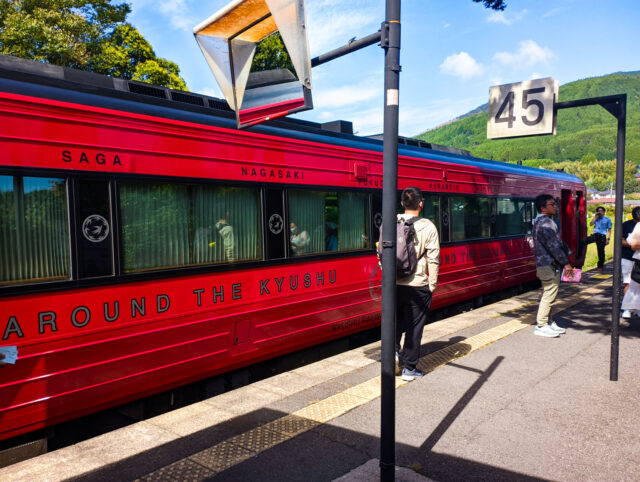
You have three major options for buying tickets online:
Official Websites
You could buy them through the official websites of the JR companies. Here is the list of the major ones:
Besides, these national ones, there are a number of private companies, like Kintetsu railway and Nankai in Kansai region or Tobu in Chibu region.
There’s a small catch with this though – you still need to pick the tickets up. You absolutely need those physical tiny tickets. So unfortunately, you need to queue at the ticket machines. However, I suggest to purchase all your tickets online in advance, then find a quieter train station or go late in the evening and pick up your tickets from there. This will definitely save you time, as opposed to trying to pick your tickets up at a busy train station during the rush hour or trying to buy your ticket on the day of your travel.
SmartEx
Another option is using SmartEx app – it’s considered an official JR app, however, if you face problems, the JR staff at the stations won’t be able to help you. I also have seen many complaints. So while I am still including this for its convenience, as most people successfully used it, I have not used it and I would still be cautious. Its main advantage? You can use the QR code online ticket at the gates or link them with your IC Card and board your train without picking up any paper tickets.
SmartEx is technically only available seven countries in the world listed here, you can still download SmartEx app from anywhere using a good VPN. Just indicate one of these 7 countries. and purchase tickets from it. If you book tickets early enough – like 3-4 weeks in advance, you might even get discounts. That said, while it works for people, it didn’t for me unfortunately.
Third Party Websites
You also have an option of buying from the third-party websites, like Klook. While I would normally not suggest this for train tickets, you may consider this if there are any discounts – they are sometimes available only from third parties. Like in case of the official websites, you will need to pick your paper tickets up at the ticket offices or machines.
Note: Neither SmartEx, nor Klook allows selecting your seats. They are automatically assigned.
Japan Rail Pass & Regional JR Passes: are They Worth it?
The benefits of Japan Rail Pass have been discussed for years by so many people. Before the price increase in 2023, this pass was worth it for most travellers, who planned to take at least one round trip Shinkansen ride in Japan. However, with the price increase, the Rail Pass is no longer cost-efficient for most travellers. That said, there are a number of conditions.
Regional Passes however, can be a great deal quite often. You just need to figure out for yourself, if you are travelling in a particular region or two to make them worth it.
So check out my detailed guide on if and when is Japan Rail Pass worth it.
Also check out my step-by-step instructions on how to book and use JR Pass.
Navigation at the Train Stations
Navigation with Maps
Inside the cities, for navigation not only Google maps and Japan Travel by Navitime, but also Citymapper provide great navigation means. You may still get lost occasionally, especially at Shinjuku, however, most of the time these maps combined with the signs should be helpful.
Signs at the Stations
Well, the signs at the metro and train stations are not always greatly placed and user friendly. Compared to other countries, I found the signs in big Japanese cities more confusing. They are sparse and not always give direction in a clear manner. So take your time to figure out, how to find a particular metro line or a particular exit.
Each of the stations have several exits. Make sure to see on Google maps or Navitime, which exit you should get out of to get to your destination easily. If you get out of the wrong exit, you may have to walk quite a lot. This especially applies to huge stations with dozens of exits, such as Tokyo station or Ueno in Tokyo.
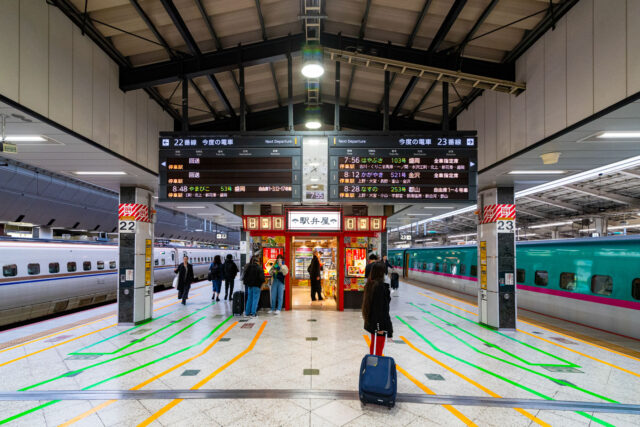
Crowding
Metros and trains in bigger cities can be extremely crowded. You probably have seen tons of videos of Japanese being squeezed into a train by the attendants on the platform. Honestly, we never saw anything like that even during rush hours. Although we have seen quite packed trains with little room to breathe.
Accessibility
If you get tired easily or have any mobility issues, the stations have signs directing you to the elevators or escalators. There are many stations, which only have stairs, making things harder for people, who have issues climbing them. I couldn’t find a map that shows, which exits have elevators or escalators unfortunately. However, this information on accessibility may be of some help.
Stamps at the Stations
While talking about Japan’s train train stations, don’t miss Japan’s adorable train‑station stamping craze. Hunting down each location for the stamp and collecting them was so much fun. Initially I used small normal notebooks but the lines on them made the stamps look not so great. Then I found a stamp book at one of the Japanese bookstores, but its cover wasn’t cute.
So we decided to create our very own ultra‑cute stamp book. We hand‑picked over 100 photos – from Tokyo’s neon streets to Shirakawago’s mountain charm, Mount Fuji’s majesty to hidden shrine details. The transparent layout keeps your stamps and notes crisp and visible, while letting the scenes beneath shine through.
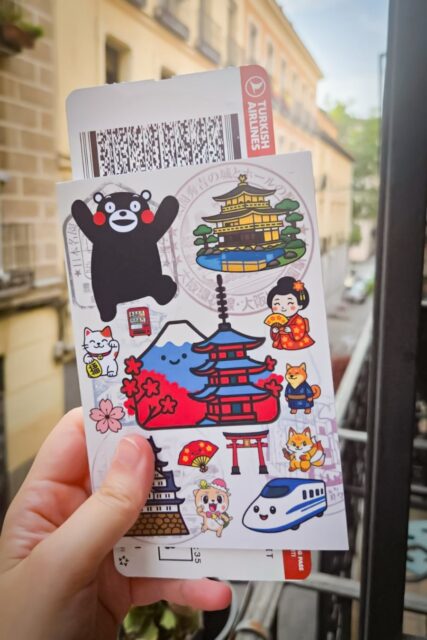
See also
My comprehensive tips for your trip to Japan

Hello I am Ket,
A traveler, planner, and sweet tooth behind Hit the Road Ket.
Travel isn’t just my passion – it’s a lifeline for my mental health. Having lived in three cities and explored 60 countries (and counting!), I created this blog to share my experiences, smart tips, and itinerary advice with fellow travel lovers. I’m all about making the most of limited time, finding scenic routes, and turning every trip into something memorable – coffee in hand, of course.


